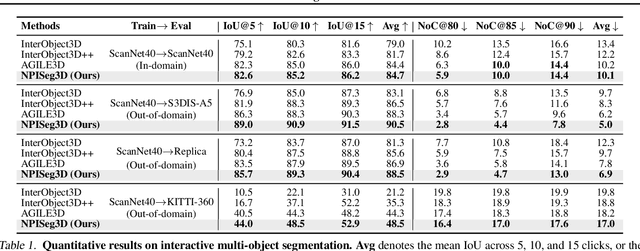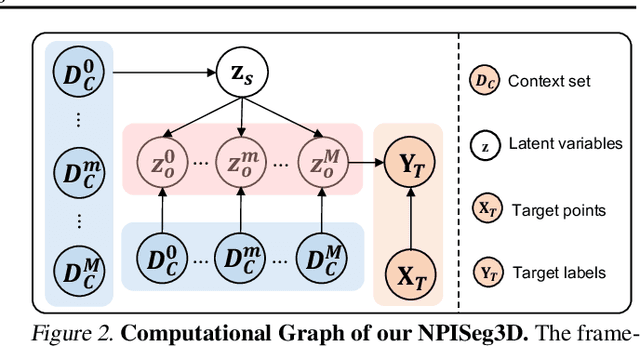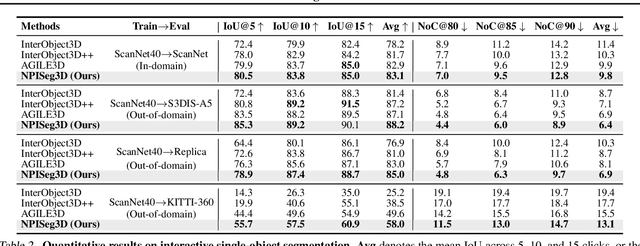Pan Zhou
The Hubei Engineering Research Center on Big Data Security, School of Cyber Science and Engineering, Huazhong University of Science and Technology
Bridging Draft Policy Misalignment: Group Tree Optimization for Speculative Decoding
Sep 26, 2025Abstract:Speculative decoding accelerates large language model (LLM) inference by letting a lightweight draft model propose multiple tokens that the target model verifies in parallel. Yet existing training objectives optimize only a single greedy draft path, while decoding follows a tree policy that re-ranks and verifies multiple branches. This draft policy misalignment limits achievable speedups. We introduce Group Tree Optimization (GTO), which aligns training with the decoding-time tree policy through two components: (i) Draft Tree Reward, a sampling-free objective equal to the expected acceptance length of the draft tree under the target model, directly measuring decoding performance; (ii) Group-based Draft Policy Training, a stable optimization scheme that contrasts trees from the current and a frozen reference draft model, forming debiased group-standardized advantages and applying a PPO-style surrogate along the longest accepted sequence for robust updates. We further prove that increasing our Draft Tree Reward provably improves acceptance length and speedup. Across dialogue (MT-Bench), code (HumanEval), and math (GSM8K), and multiple LLMs (e.g., LLaMA-3.1-8B, LLaMA-3.3-70B, Vicuna-1.3-13B, DeepSeek-R1-Distill-LLaMA-8B), GTO increases acceptance length by 7.4% and yields an additional 7.7% speedup over prior state-of-the-art EAGLE-3. By bridging draft policy misalignment, GTO offers a practical, general solution for efficient LLM inference.
Learning from Few Samples: A Novel Approach for High-Quality Malcode Generation
Aug 25, 2025Abstract:Intrusion Detection Systems (IDS) play a crucial role in network security defense. However, a significant challenge for IDS in training detection models is the shortage of adequately labeled malicious samples. To address these issues, this paper introduces a novel semi-supervised framework \textbf{GANGRL-LLM}, which integrates Generative Adversarial Networks (GANs) with Large Language Models (LLMs) to enhance malicious code generation and SQL Injection (SQLi) detection capabilities in few-sample learning scenarios. Specifically, our framework adopts a collaborative training paradigm where: (1) the GAN-based discriminator improves malicious pattern recognition through adversarial learning with generated samples and limited real samples; and (2) the LLM-based generator refines the quality of malicious code synthesis using reward signals from the discriminator. The experimental results demonstrate that even with a limited number of labeled samples, our training framework is highly effective in enhancing both malicious code generation and detection capabilities. This dual enhancement capability offers a promising solution for developing adaptive defense systems capable of countering evolving cyber threats.
DreamCS: Geometry-Aware Text-to-3D Generation with Unpaired 3D Reward Supervision
Jun 11, 2025Abstract:While text-to-3D generation has attracted growing interest, existing methods often struggle to produce 3D assets that align well with human preferences. Current preference alignment techniques for 3D content typically rely on hardly-collected preference-paired multi-view 2D images to train 2D reward models, when then guide 3D generation -- leading to geometric artifacts due to their inherent 2D bias. To address these limitations, we construct 3D-MeshPref, the first large-scale unpaired 3D preference dataset, featuring diverse 3D meshes annotated by a large language model and refined by human evaluators. We then develop RewardCS, the first reward model trained directly on unpaired 3D-MeshPref data using a novel Cauchy-Schwarz divergence objective, enabling effective learning of human-aligned 3D geometric preferences without requiring paired comparisons. Building on this, we propose DreamCS, a unified framework that integrates RewardCS into text-to-3D pipelines -- enhancing both implicit and explicit 3D generation with human preference feedback. Extensive experiments show DreamCS outperforms prior methods, producing 3D assets that are both geometrically faithful and human-preferred. Code and models will be released publicly.
Towards Robust Overlapping Speech Detection: A Speaker-Aware Progressive Approach Using WavLM
May 29, 2025Abstract:Overlapping Speech Detection (OSD) aims to identify regions where multiple speakers overlap in a conversation, a critical challenge in multi-party speech processing. This work proposes a speaker-aware progressive OSD model that leverages a progressive training strategy to enhance the correlation between subtasks such as voice activity detection (VAD) and overlap detection. To improve acoustic representation, we explore the effectiveness of state-of-the-art self-supervised learning (SSL) models, including WavLM and wav2vec 2.0, while incorporating a speaker attention module to enrich features with frame-level speaker information. Experimental results show that the proposed method achieves state-of-the-art performance, with an F1 score of 82.76\% on the AMI test set, demonstrating its robustness and effectiveness in OSD.
Agentic Robot: A Brain-Inspired Framework for Vision-Language-Action Models in Embodied Agents
May 29, 2025Abstract:Long-horizon robotic manipulation poses significant challenges for autonomous systems, requiring extended reasoning, precise execution, and robust error recovery across complex sequential tasks. Current approaches, whether based on static planning or end-to-end visuomotor policies, suffer from error accumulation and lack effective verification mechanisms during execution, limiting their reliability in real-world scenarios. We present Agentic Robot, a brain-inspired framework that addresses these limitations through Standardized Action Procedures (SAP)--a novel coordination protocol governing component interactions throughout manipulation tasks. Drawing inspiration from Standardized Operating Procedures (SOPs) in human organizations, SAP establishes structured workflows for planning, execution, and verification phases. Our architecture comprises three specialized components: (1) a large reasoning model that decomposes high-level instructions into semantically coherent subgoals, (2) a vision-language-action executor that generates continuous control commands from real-time visual inputs, and (3) a temporal verifier that enables autonomous progression and error recovery through introspective assessment. This SAP-driven closed-loop design supports dynamic self-verification without external supervision. On the LIBERO benchmark, Agentic Robot achieves state-of-the-art performance with an average success rate of 79.6\%, outperforming SpatialVLA by 6.1\% and OpenVLA by 7.4\% on long-horizon tasks. These results demonstrate that SAP-driven coordination between specialized components enhances both performance and interpretability in sequential manipulation, suggesting significant potential for reliable autonomous systems. Project Github: https://agentic-robot.github.io.
Automating Safety Enhancement for LLM-based Agents with Synthetic Risk Scenarios
May 23, 2025



Abstract:Large Language Model (LLM)-based agents are increasingly deployed in real-world applications such as "digital assistants, autonomous customer service, and decision-support systems", where their ability to "interact in multi-turn, tool-augmented environments" makes them indispensable. However, ensuring the safety of these agents remains a significant challenge due to the diverse and complex risks arising from dynamic user interactions, external tool usage, and the potential for unintended harmful behaviors. To address this critical issue, we propose AutoSafe, the first framework that systematically enhances agent safety through fully automated synthetic data generation. Concretely, 1) we introduce an open and extensible threat model, OTS, which formalizes how unsafe behaviors emerge from the interplay of user instructions, interaction contexts, and agent actions. This enables precise modeling of safety risks across diverse scenarios. 2) we develop a fully automated data generation pipeline that simulates unsafe user behaviors, applies self-reflective reasoning to generate safe responses, and constructs a large-scale, diverse, and high-quality safety training dataset-eliminating the need for hazardous real-world data collection. To evaluate the effectiveness of our framework, we design comprehensive experiments on both synthetic and real-world safety benchmarks. Results demonstrate that AutoSafe boosts safety scores by 45% on average and achieves a 28.91% improvement on real-world tasks, validating the generalization ability of our learned safety strategies. These results highlight the practical advancement and scalability of AutoSafe in building safer LLM-based agents for real-world deployment. We have released the project page at https://auto-safe.github.io/.
MMMR: Benchmarking Massive Multi-Modal Reasoning Tasks
May 22, 2025Abstract:Recent advances in Multi-Modal Large Language Models (MLLMs) have enabled unified processing of language, vision, and structured inputs, opening the door to complex tasks such as logical deduction, spatial reasoning, and scientific analysis. Despite their promise, the reasoning capabilities of MLLMs, particularly those augmented with intermediate thinking traces (MLLMs-T), remain poorly understood and lack standardized evaluation benchmarks. Existing work focuses primarily on perception or final answer correctness, offering limited insight into how models reason or fail across modalities. To address this gap, we introduce the MMMR, a new benchmark designed to rigorously evaluate multi-modal reasoning with explicit thinking. The MMMR comprises 1) a high-difficulty dataset of 1,083 questions spanning six diverse reasoning types with symbolic depth and multi-hop demands and 2) a modular Reasoning Trace Evaluation Pipeline (RTEP) for assessing reasoning quality beyond accuracy through metrics like relevance, consistency, and structured error annotations. Empirical results show that MLLMs-T overall outperform non-thinking counterparts, but even top models like Claude-3.7-Sonnet and Gemini-2.5 Pro suffer from reasoning pathologies such as inconsistency and overthinking. This benchmark reveals persistent gaps between accuracy and reasoning quality and provides an actionable evaluation pipeline for future model development. Overall, the MMMR offers a scalable foundation for evaluating, comparing, and improving the next generation of multi-modal reasoning systems.
BadVLA: Towards Backdoor Attacks on Vision-Language-Action Models via Objective-Decoupled Optimization
May 22, 2025Abstract:Vision-Language-Action (VLA) models have advanced robotic control by enabling end-to-end decision-making directly from multimodal inputs. However, their tightly coupled architectures expose novel security vulnerabilities. Unlike traditional adversarial perturbations, backdoor attacks represent a stealthier, persistent, and practically significant threat-particularly under the emerging Training-as-a-Service paradigm-but remain largely unexplored in the context of VLA models. To address this gap, we propose BadVLA, a backdoor attack method based on Objective-Decoupled Optimization, which for the first time exposes the backdoor vulnerabilities of VLA models. Specifically, it consists of a two-stage process: (1) explicit feature-space separation to isolate trigger representations from benign inputs, and (2) conditional control deviations that activate only in the presence of the trigger, while preserving clean-task performance. Empirical results on multiple VLA benchmarks demonstrate that BadVLA consistently achieves near-100% attack success rates with minimal impact on clean task accuracy. Further analyses confirm its robustness against common input perturbations, task transfers, and model fine-tuning, underscoring critical security vulnerabilities in current VLA deployments. Our work offers the first systematic investigation of backdoor vulnerabilities in VLA models, highlighting an urgent need for secure and trustworthy embodied model design practices. We have released the project page at https://badvla-project.github.io/.
ReAlign: Bilingual Text-to-Motion Generation via Step-Aware Reward-Guided Alignment
May 08, 2025Abstract:Bilingual text-to-motion generation, which synthesizes 3D human motions from bilingual text inputs, holds immense potential for cross-linguistic applications in gaming, film, and robotics. However, this task faces critical challenges: the absence of bilingual motion-language datasets and the misalignment between text and motion distributions in diffusion models, leading to semantically inconsistent or low-quality motions. To address these challenges, we propose BiHumanML3D, a novel bilingual human motion dataset, which establishes a crucial benchmark for bilingual text-to-motion generation models. Furthermore, we propose a Bilingual Motion Diffusion model (BiMD), which leverages cross-lingual aligned representations to capture semantics, thereby achieving a unified bilingual model. Building upon this, we propose Reward-guided sampling Alignment (ReAlign) method, comprising a step-aware reward model to assess alignment quality during sampling and a reward-guided strategy that directs the diffusion process toward an optimally aligned distribution. This reward model integrates step-aware tokens and combines a text-aligned module for semantic consistency and a motion-aligned module for realism, refining noisy motions at each timestep to balance probability density and alignment. Experiments demonstrate that our approach significantly improves text-motion alignment and motion quality compared to existing state-of-the-art methods. Project page: https://wengwanjiang.github.io/ReAlign-page/.
Probabilistic Interactive 3D Segmentation with Hierarchical Neural Processes
May 03, 2025



Abstract:Interactive 3D segmentation has emerged as a promising solution for generating accurate object masks in complex 3D scenes by incorporating user-provided clicks. However, two critical challenges remain underexplored: (1) effectively generalizing from sparse user clicks to produce accurate segmentation, and (2) quantifying predictive uncertainty to help users identify unreliable regions. In this work, we propose NPISeg3D, a novel probabilistic framework that builds upon Neural Processes (NPs) to address these challenges. Specifically, NPISeg3D introduces a hierarchical latent variable structure with scene-specific and object-specific latent variables to enhance few-shot generalization by capturing both global context and object-specific characteristics. Additionally, we design a probabilistic prototype modulator that adaptively modulates click prototypes with object-specific latent variables, improving the model's ability to capture object-aware context and quantify predictive uncertainty. Experiments on four 3D point cloud datasets demonstrate that NPISeg3D achieves superior segmentation performance with fewer clicks while providing reliable uncertainty estimations.
 Add to Chrome
Add to Chrome Add to Firefox
Add to Firefox Add to Edge
Add to Edge